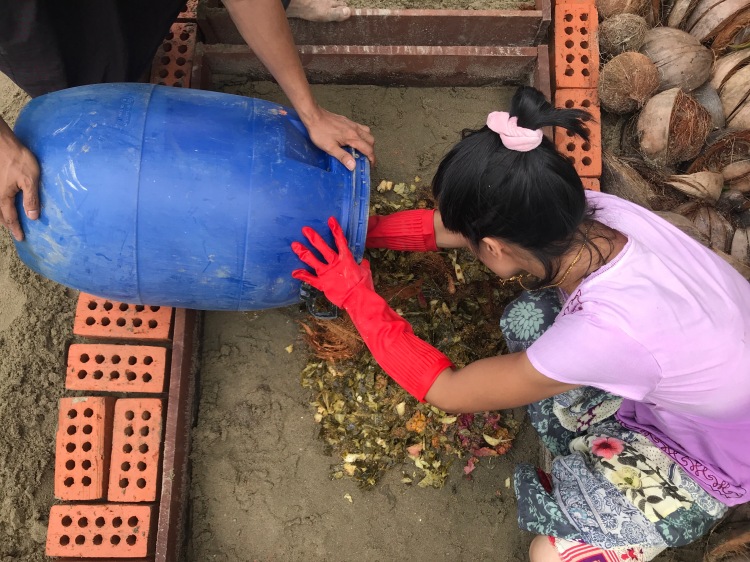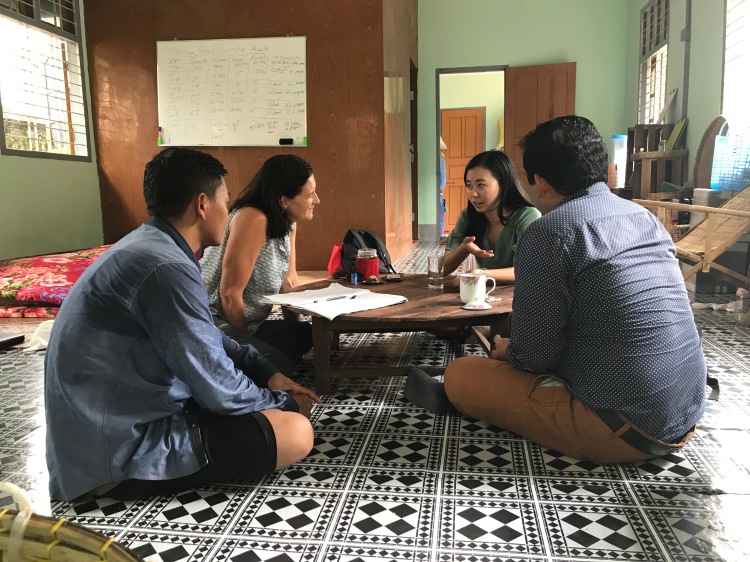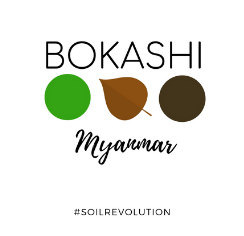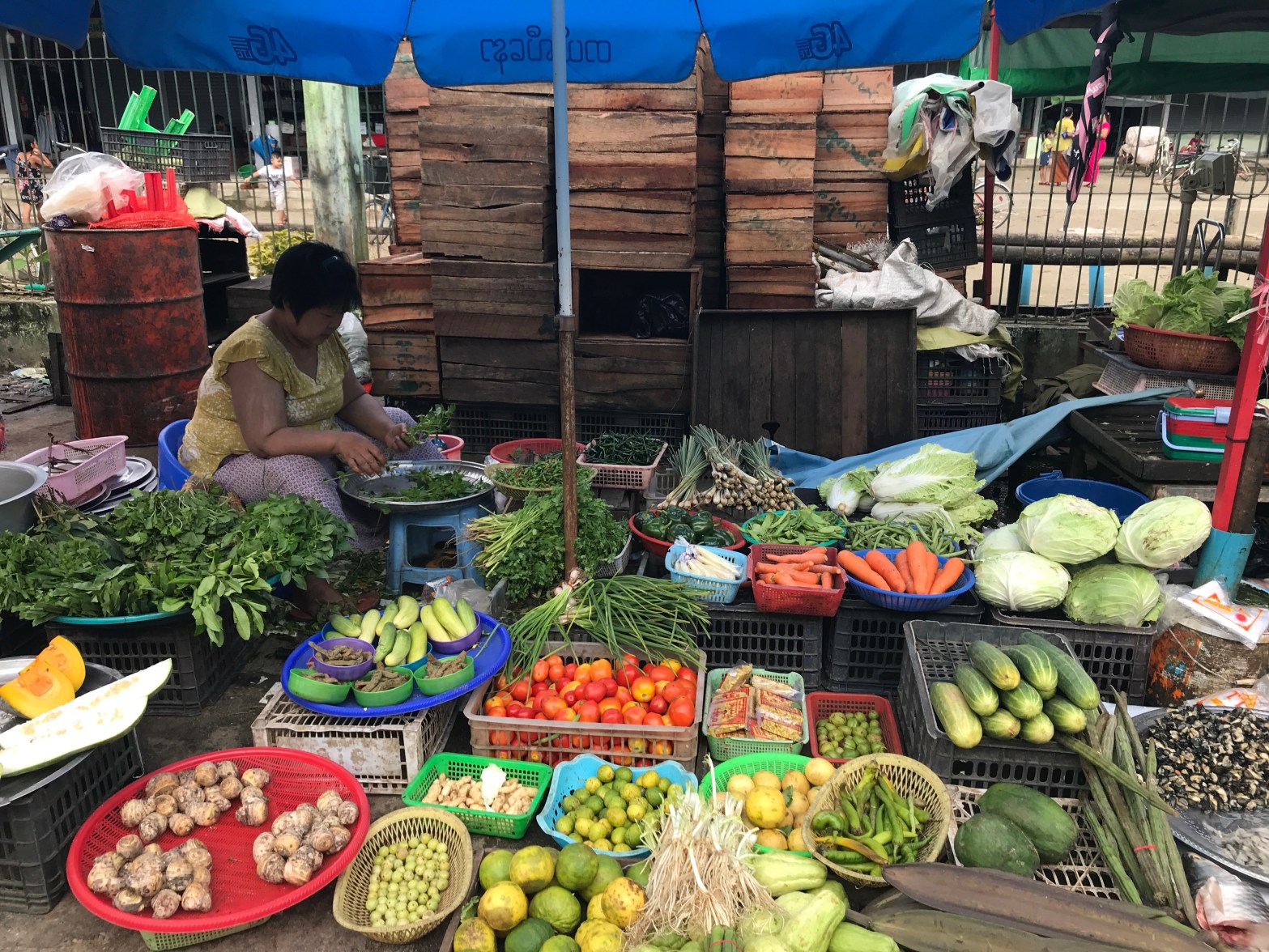 FOLLOW US ON FACEBOOK! “Bokashi Myanmar”
FOLLOW US ON FACEBOOK! “Bokashi Myanmar”
A lot of people are really upset about all the organic waste going to landfill here in Yangon.
Each time a council truck dumps its load of trash collected from the dumpsters of this megacity the stuff that pours out is predictable. One-third of the load is plastic and other non-degradable stuff. And the two-thirds is organic waste.
But organic waste should never be trash in the first place!
How come so much of it ends up at the tip?
We’ve spent the last three months working with this; our plan is to spend the next years changing the situation. Here, in Yangon, initially and later in the rest of Myanmar. To be honest, the whole of Asia is screaming out for a solution, but that’s more than we can get our head around just now.
We started Bokashi Myanmar this year with one big, wide vision. To stop organic waste going to landfill, or dumped in the river, or left to rot by the side of a road. And to start building healthy, fertile soil that can form the base for a whole new generation of urban gardening here in Yangon or any other city.
Our project started just under a year ago — with an idea, and a fledgling team. Bokashi is the name of the method we’re using: it’s a Japanese concept, based on fermentation, proven over several decades, and a damn fine way of making soil. It’s quick, and easy, and cheap, but the best part is that it gets carbon into the soil where it belongs, and out of the atmosphere, where it doesn’t.
How are we so sure about all this? With my team in Sweden, I have been working with bokashi for over a decade and it is a very, very good method. Just the piece of the puzzle we’ve been looking for globally in terms of sorting out waste management for the future. And regenerating soil carbon in the smartest possible way at street level.
So a year ago we started forming our team. I’ll tell you more about who we are later (or you can check some of our earlier posts), but there are five of us, two from Myanmar and three Europeans. At this stage. Pretty soon we’ll be growing our team, plenty of people would like to work with us it seems.
We spent a month in Myanmar earlier this year, all of us, researching the project and scoping out how to best do it. We met a LOT of people on all fronts — business, waste, community, NGO, recycling, householders — and it was totally obvious that we should take a deep breath, gather our courage, and make this project a reality.
In July this year, we started.
Bokashi yard
Monsoon season, obviously. The ultimate challenge in terms of making soil, starting a garden, organising anything. But we survived, and it was fine. Everything worked!
Our first step was to start a bokashi yard. A place we could have our headquarters, test all our ideas, create a demonstration site where we could show and tell and train. Produce the products we need, and start a rudimentary shop.
Clearly, with all the rain involved, we needed a roof over our heads too. Somewhere to duck in until the rain passed, organise our production and our paperwork, and have a beer after a long days work.
We found the perfect place — after some months of looking for something that would work at a price we could afford — in the northern outskirts of Yangon. North Dagon, Ward 45. It’s a normal house on a normal plot of land on a normal street in a suburban area. Close to the bus route but quiet as anything — birds and butterflies, nice neighbours and no cars. Ideal. We even have a bunch of wild cows that wander up and down the road foraging on the verges!
The garden was neat and nice — but basically just a yard full of sand with a few trees. The whole area used to be rice paddies once, which means it is submerged every monsoon. The problem is solved by those people that can afford it by filling their site with sand. So our yard is relatively well-drained (good!) but is basically a desert with almost a meter deep of sand (a challenge, to say the least).
The ultimate challenge for us and our ideas, actually, as we needed to prove — quickly — that we could create fertile soil using the waste we had around us and start a garden more or less immediately.

We succeeded
We started making bokashi directly. Barrels and barrels and barrels of it. We collected organic waste from our two local markets, from our neighbours, from the fruit shop on the corner. We fermented it all.
The process is simple, actually. We make a fermentation starter called bokashi bran out of rice bran and Effective Microorganisms (read more here) and molasses, and use that to ferment the food waste.
We give each barrel a week or two to ferment, then dig it down. This is our basic method: the concept we plan to spread throughout the country. Collect, ferment, dig down, grow. The whole process, start to finish, takes just two or three weeks. And it is possible to handle huge amounts of organic waste in this simple way.
The fermented bokashi can be used in a number of ways. We have one method for people living in apartments, another for people living in houses with yards, another for community projects and urban farmers.
The method we’re working with most, just now, is the latter. We’ve set up a corner to demonstrate the first two methods, but the real challenge is how to process big quantities of food waste in relatively small spaces. In effect, we are developing compost farms that can be scaled from very small scale to very big.
Actually, we were really lucky to have a visit from a New Zealand woman, Claire Mummery, in the middle of all this testing. Clair has worked with large-scale bokashi for many years in vineyard restaurants in NZ and has developed an excellent method that she shared with us.
It means we can get 200-300 liters of fermented organic waste down into a small area of just a couple of square meters. Where previously we were layering with soil (or in our case, sand, as we have no soil), Claire showed us how to layer with carbon. So now we dig deep trenches a meter or so deep, and alternate layers of coconut husks, brown leaves, shredded newspaper and rice husk with our fermented organic waste, or bokashi.
In terms of soil-building, this is optimal, as the brown materials have a higher carbon content than the fruit and vegetable waste, which have more nitrogen. We top off these deep beds, filled with the most amazing nutrients, with a layer of sand.
One week later we can start planting.
This is unheard of in the gardening world.
Normally compost is something that takes months and years, not just a couple of weeks. Bokashi is fast, but the magic is that you don’t have to wait for all the materials to turn into soil before you start planting in them. The first week or so the mix is a bit acidic, but after that it’s fine — and the fermentation has prepared the nutrients in such a way that the plants can take them up immediately.
Actually, a very convenient win-win solution. We get rid of our waste fast, and we can start growing in it fast.
This means that the time from a pineapple or cabbage being discarded at market until a new tomato or mango is planted in the mixture is just a couple of weeks. And the new plant will have all the nutrition it needs to grow big and strong, and produce new fruit and vegetables.
Amazing.

So this is what we’re doing in our bokashi yard.
We’re currently processing 60-100 liters of organic waste per day in our small yard. Just to see if we can, and if it works. We’ve sorted out a few deals with the cabbage guy at the market, and the coconut guy, and with the fruit woman too, and there is a squad of local trishaw riders who more than happily deliver it all to us at going rates.
All this experimentation is giving us confidence in what we’re doing. We’re getting some good flows going, and learning how to streamline our, admittedly, small-scale process.
Next step is to scale it up a notch. So we’re looking for a new, and bigger yard, not too far away where we can start up more of a process line. We hope to add a coconut crusher to the input end, and a roofed area where we can work, some proper space for all our incoming and outgoing materials.
We’re arranging with companies and others to get in our raw materials — organic waste, mainly — and will develop a range of different compost and fertiliser products as our output. For people that want to do all this themselves, we will structure up our training and demos and share our methods.
That’s our bokashi yard, version 1.0. We are really pleased, and excited about what our yard 2.0 will bring.
Meanwhile, we have a couple of other projects underway — same idea but in communities where this type of solution is so badly needed.
Tell you more about that in the next post!
/Jenny from Bokashi Myanmar




This is such an amazing project! Good luck with yard 2.0 and keep up the great work.
LikeLike
Thanks for your encouragement!
LikeLiked by 1 person